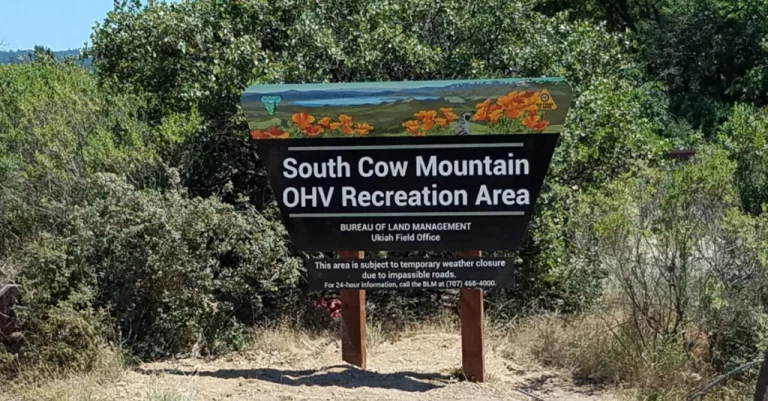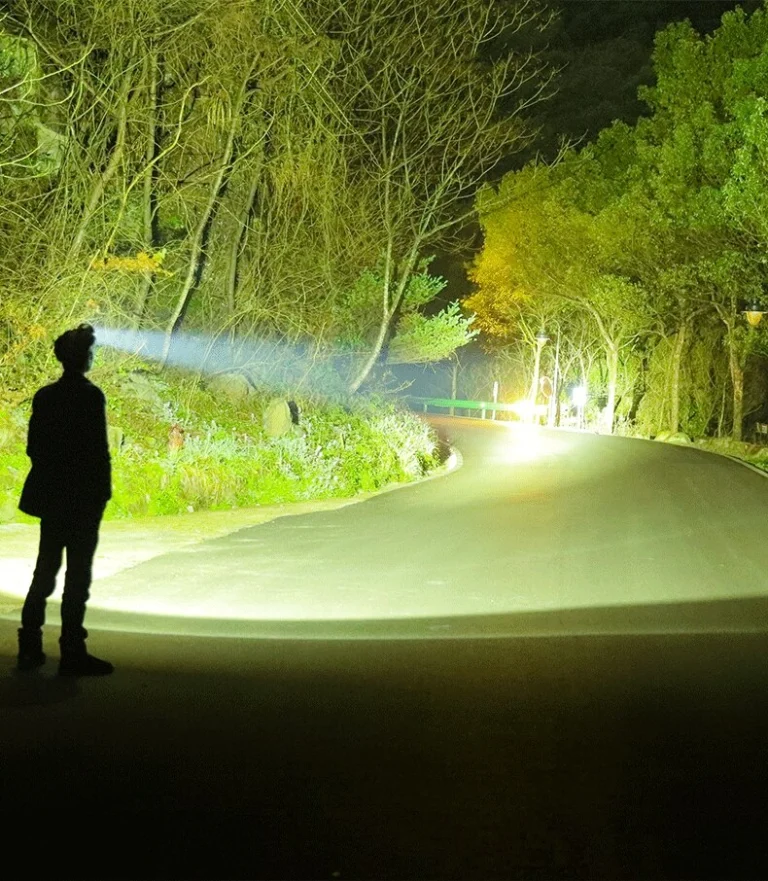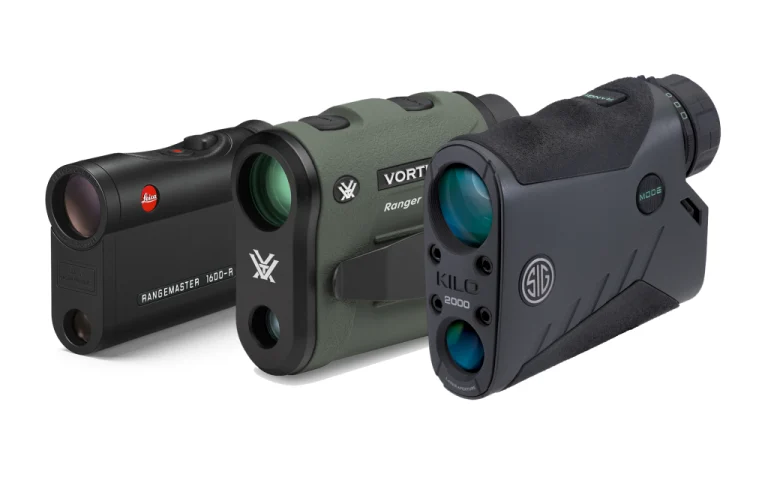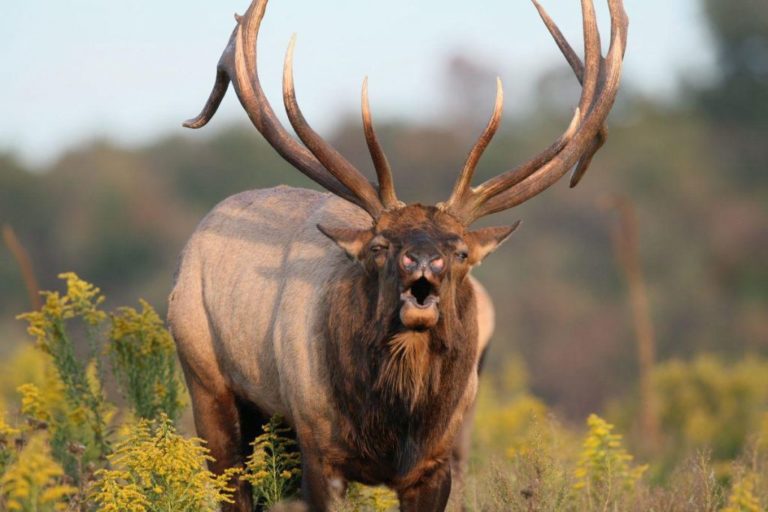Introduction To Trail Cameras

Trail cameras have revolutionized the way outdoor enthusiasts and wildlife researchers observe and monitor wildlife. These compact devices, also known as game cameras or scouting cameras, offer a unique perspective into the hidden world of animals, capturing their behavior in their natural habitat.
Whether you are an avid hunter, nature lover, or simply curious about the wonders of wildlife, understanding the capabilities and functions of trail cameras is essential.
In this comprehensive guide, we will delve into every aspect of trail cameras – from their history and evolution to their advanced features and applications. We will explore how these innovative devices work, discuss important factors to consider when purchasing one, and provide expert tips on maximizing their effectiveness.
The Evolution Of Trail Cameras: From Film To Digital
Trail cameras have come a long way since their inception, transitioning from film-based technology to the digital age. In the early days, trail camera enthusiasts relied on traditional film rolls, which required manual development and limited the number of photos that could be captured.
However, with the advent of digital trail cameras, photographers experienced a revolution in wildlife monitoring. These innovative devices allowed for instant image review and storage on memory cards, eliminating the need for time-consuming processing.
Moreover, digital trail cameras introduced improved image quality and higher resolution capabilities that enhanced the overall experience for wildlife enthusiasts and researchers alike. This remarkable evolution marked a significant milestone in the field of trail camera technology.
There are two primary types of trail cameras: traditional and cellular:
Traditional cameras store images and videos on an SD card, which you must physically retrieve to view.
Cellular cameras transmit photos and videos to your phone or email, allowing for real-time monitoring.
A Breakdown Of The Technology:

Trail cameras have revolutionized wildlife monitoring and outdoor photography, but have you ever wondered how these remarkable devices actually work? At their core, trail cameras are equipped with motion sensors that detect any movement within their field of view.
Once triggered, they swiftly capture high-resolution images or videos using infrared technology, even in low-light conditions.
These images are then stored on an internal memory card for later retrieval.
The advanced technology within trail cameras ensures that they can operate for extended periods without human intervention by utilizing energy-efficient features like battery-saving modes and solar panels for recharging.
Additionally, many modern trail cameras also offer wireless connectivity options to remotely access the captured media from your smartphone or computer.
Factors To Consider
When selecting a trail camera, there are several crucial factors to consider that can greatly impact your wildlife monitoring experience. Firstly, image quality plays a vital role in capturing clear and detailed photos or videos. Look for cameras with high resolution and adjustable settings to suit your specific needs.
Another significant aspect is the trigger speed, which determines how quickly the camera captures an image once motion is detected.

A faster trigger speed ensures you don’t miss any important moments. Battery life is equally important as it directly affects how long your camera can operate without frequent battery changes or recharging. Lastly, consider the durability and weather resistance of the camera to withstand harsh outdoor conditions for extended periods.
Setting Up Your Trail Camera: Best Practices And Tips
Setting up your trail camera properly is crucial to ensure accurate and effective wildlife monitoring. Before deploying your camera, choose a strategic location that maximizes coverage of animal activity.
Look for well-defined trails, water sources, or feeding areas. Position the camera at an appropriate height and angle to capture clear images without obstruction. It is advisable to test the camera’s functionality before leaving it unattended, ensuring proper battery life and memory card capacity.
Adjust settings such as resolution, trigger speed, and sensitivity based on your specific requirements. Regularly check and maintain the camera by cleaning lenses and removing any debris that may obstruct visibility. By following these best practices, you will increase the chances of capturing valuable data while minimizing potential issues with your trail camera setup.
Understanding Image Quality And Resolution In Trail Camera Photography

In the world of trail camera photography, image quality and resolution play a crucial role in capturing accurate and detailed wildlife footage. Image quality refers to the overall clarity, sharpness, and color accuracy of a photograph, while resolution determines the level of detail captured by the camera sensor.
Higher resolution images allow for better zooming capabilities and improved post-processing options. However, it’s important to strike a balance between image quality and file size as larger files can quickly fill up memory cards.
Understanding how these factors affect trail camera photography is essential for achieving stunning wildlife shots.
By selecting the right combination of image quality settings and resolution options, photographers can ensure optimal results while preserving valuable storage space.
Advanced Features And Functions Of Modern Trail Cameras
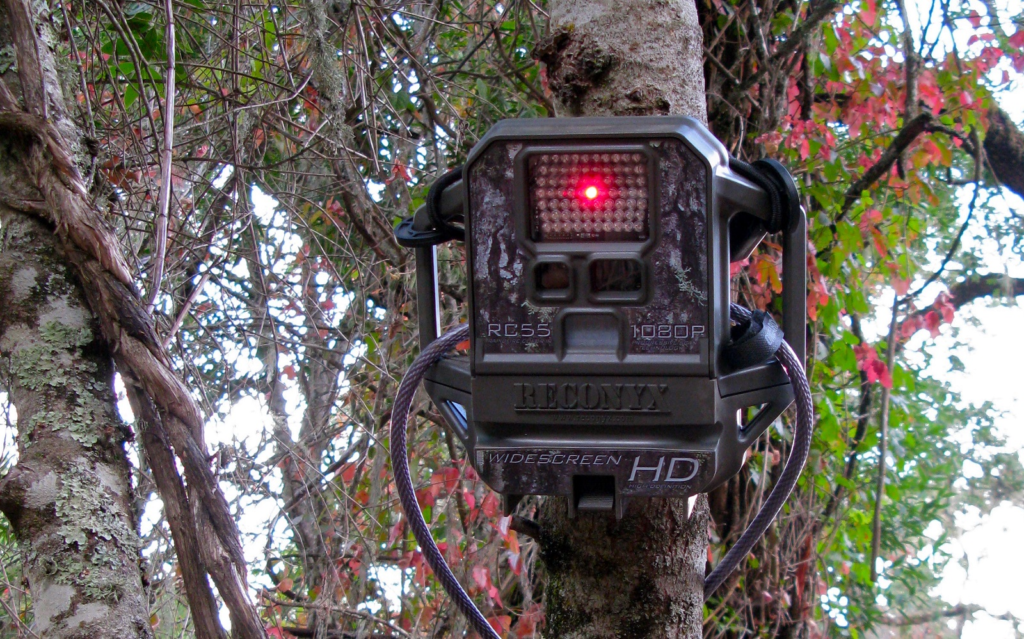
Modern trail cameras offer a plethora of advanced features and functions that have revolutionized wildlife monitoring. These devices now boast high-resolution image and video capabilities, capturing stunning visuals of elusive creatures in their natural habitats.
With innovative motion-sensing technology, they can detect even the slightest movement, ensuring no moment goes unnoticed. Additionally, advanced night vision capabilities enable these cameras to record crystal-clear footage even in complete darkness.
GPS tracking systems further enhance their functionality by allowing users to pinpoint exact locations for efficient scouting and data analysis.
Moreover, wireless connectivity options enable real-time remote access to camera feeds, facilitating seamless monitoring from anywhere in the world. These remarkable advancements have made modern trail cameras indispensable tools for researchers, wildlife enthusiasts, and conservationists alike.
Common Mistakes To Avoid When Using A Trail Camera
- Poor Placement: One of the most common mistakes is placing the trail camera too high or too low, leading to missed or distorted images. Ensure it is positioned at the right height and angle for optimum coverage.
- Incorrect Settings: Failing to adjust the camera settings according to your specific needs can result in blurry or overexposed photos. Take time to understand each setting and tailor them appropriately.
- Inadequate Batteries: Neglecting to use high-quality batteries or failing to check their power levels regularly can lead to sudden camera shutdowns, missing out on crucial footage.
Options to Consider Based on Budget:
Top Choice:
9 Best Trail Camera Options
1. GardePro E6
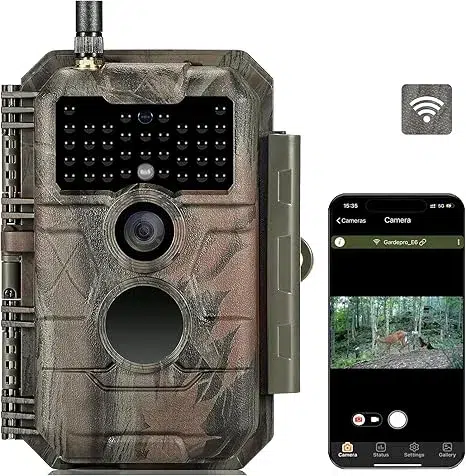
Fast, Wireless Access
Connect via low-power Wi-Fi and Bluetooth using the free GardePro Mobile app. No monthly fees. Just stay within signal range for full control.
Stronger Signal, Less Dropout
Built-in antenna ensures a reliable Wi-Fi connection for faster, smoother file transfers to your phone.
Crystal-Clear Image & Video
Capture ultra-sharp 48MP photos and 1296p HD videos with a wide 110° lens and advanced H.264 video compression—preview footage instantly without downloading.
Invisible Night Vision
940nm no-glow infrared LEDs provide stealthy, adaptive night vision up to 75 feet, without overexposure or dimming.
Feature-Packed
Includes photo + video modes, time-lapse, sound recording, timestamping, loop recording, password protection, and waterproof housing.
2. GardePro A3S
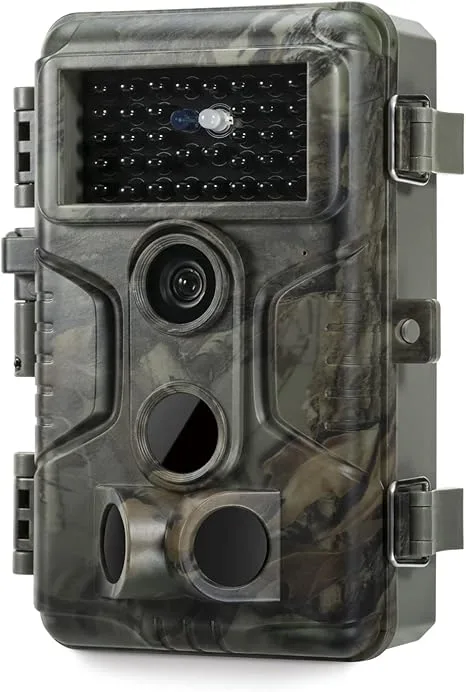
Exceptional Night Vision
Equipped with a Sony Starvis sensor and black no-glow infrared LEDs, the A3S captures sharp, detailed images in total darkness—up to 100 feet away, without spooking wildlife.
Ultra-Vivid 64MP Photos
A top-tier optical lens and advanced image sensor, with custom tuning, deliver vibrant, high-resolution stills every time.
Immersive HD Video
Shoot in 1080p or 1296p HD, paired with a high-quality microphone for rich, clear audio—perfect for capturing wildlife in motion and sound.
Lightning-Fast Trigger
With 0.1-second trigger speed and a 3 PIR motion sensor system, it snaps up to 5 rapid-fire shots to catch even split-second action.
User-Friendly Design
Features a 2.4″ color screen, hybrid photo+video mode, playback, timestamp, and password protection. Runs on 8 AA batteries and a standard SD card (both not included) for easy setup in the field.
3. Spypoint Link-Micro

Spypoint is known for its cellular trail cameras and they’re a great choice for those looking for continuous connectivity over long distances. Some stats that make this one stand out to many:
Wireless Connectivity:
The Spypoint Link Micro is designed to be a cellular trail camera, allowing you to remotely access and view images captured by the camera through a cellular network.
Resolution:
The camera offers various resolution options for both images and videos. Higher resolution options provide clearer and more detailed images.
Night Vision:
Equipped with infrared LEDs for night vision, enabling the camera to capture images or videos in low-light or nighttime conditions without disturbing wildlife.
Motion Detection:
Features a motion sensor that triggers the camera to capture images or record videos when motion is detected.
Power Source:
Powered by batteries. Some models may offer extended battery life, and certain accessories may be available for external power sources.
Storage:
Uses SD cards to store captured images and videos.
4. Reconyx HyperFire

Reconyx is known for its premium-quality trail cameras. They are standalone trail cameras offering cellular-enabled models that allow for remote access to images and videos. Some features to take note of:
Trigger Speed:
Reconyx is known for its fast trigger speeds, allowing the camera to capture images or videos quickly when motion is detected. Fast trigger speeds are essential for capturing fast-moving wildlife.
Flash Technology:
Reconyx HyperFire cameras utilize No-Glow or Low-Glow infrared flash technology for nighttime image and video capture. These flashes are designed to be less visible to wildlife.
Durability:
Reconyx trail cameras, including the HyperFire series, are built to withstand harsh outdoor conditions. They are known for their durability and weather-resistant construction.
Motion Detection:
Equipped with a high-quality motion sensor, the HyperFire cameras are designed to detect motion accurately, minimizing false triggers.
Battery Life:
Reconyx cameras have really efficient power management systems, providing extended battery life. Though they are powered by AA batteries.
Storage:
Reconyx HyperFire cameras use SD cards to store captured images and videos. They are compatible with a range of SD card sizes.
5. TACTACAM Reveal Pro 3

Stay Connected from Anywhere
With multi-network cellular compatibility and a seamless mobile app, the REVEAL Pro 3.0 keeps you updated in real time—no matter where you are. Works with the Tactacam Reveal 32GB SD card (Class 10 U3) for top performance.
Crystal-Clear HD Media
Capture 1080p full HD video and sharp stills using on-demand photo and video requests straight from the app. Choose from 10, 15, or 30-second clips to see what’s really happening in the field.
Undetectable at Night
Outfitted with No-Glow IR flash technology, this camera is completely invisible to wildlife while delivering reliable low-light performance.
Fast, Smart, Responsive
Snaps into action with fast trigger speeds and a 3-shot burst mode to make sure you don’t miss a thing.
Built-in GPS + LCD Display
Easily track your camera’s exact location using the integrated GPS, and manage settings with the built-in 2″ LCD screen—no guesswork needed.
Reliable All-Season Performance
Built for serious hunters, this cam delivers long battery life, versatile SD card support, and all-weather durability to keep you locked into the action all season long.
6. SPYPOINT Flex-M Twin Pack

Cuddeback’s cameras are praised for their fast trigger speeds and their connectivity (which you could probably have guessed by looking at them) they are great for the following reasons:
Wireless Network (CuddeLink):
The CuddeLink system allows multiple trail cameras to link together, creating a network. This enables users to view images from all linked cameras at a central location without physically visiting each camera.
Range and Communication:
The cameras within the CuddeLink system communicate with each other over a wireless network. The range between cameras may vary, and it’s essential to consider the communication distance when setting up the cameras.
Individual Camera Features:
Each CuddeLink trail camera includes motion detection, infrared or flash technology for night vision, high-resolution image capture, and video recording.
Durability:
Cuddeback trail cameras, including those in the CuddeLink series, are built to withstand outdoor conditions and are designed to be durable and weather-resistant.
7. 48MP 4K DEATTI Trail Camera
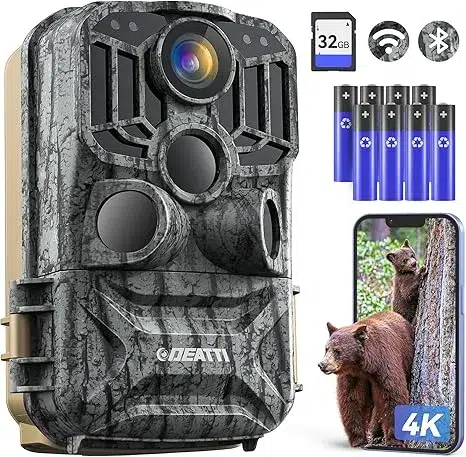
Remote Control via Bluetooth + WiFi
Easily connect through built-in WiFi and Bluetooth using a smartphone app—no cables, no fuss. Check footage, monitor the camera’s status, and capture wildlife moments in real-time, even during bad weather. (Note: Not compatible with home WiFi networks.)
Stunning 48MP Photos & 4K Video
Record in 2160P resolution with vibrant 48MP stills—sharp enough for close-up detail even in low light. Built-in 2.0” LCD screen lets you review footage right on the spot.
Blazing 0.1s Trigger Speed
The moment movement is detected, the camera fires in just 0.1 seconds—with up to 3-shot bursts and a detection range of 98 feet, day or night.
Ultra-Wide 120° Field of View
Capture more action with a 120° wide-angle lens and triple PIR sensors that increase motion sensitivity and reduce missed moments.
Full Feature Set
Includes photo + video modes, time-lapse, timestamp, loop recording, sound capture, operation hours, password protection, and rugged IP66 waterproofing—ready for any terrain, any season.
8. Wosports Mini Trail Camera
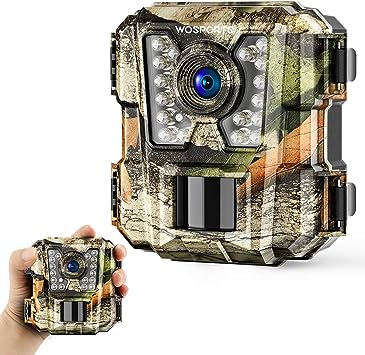
Compared to other wildlife cameras, this game camera is much smaller in weight and appearance, providing a new visual experience and showing you a different world of wildlife. The default settings are already ideal for most wildlife applications, making it easy to use. Their main features include:
Ease of Use:
Trail cameras from Wosports are generally designed to be user-friendly, with straightforward setup and configuration
Motion Detection:
Features a motion sensor that triggers the camera to capture images or record videos when motion is detected. Fast trigger speeds are common in trail cameras to capture fast-moving wildlife.
Night Vision:
Equipped with infrared LEDs for night vision, enabling the camera to capture images or videos in low-light or nighttime conditions without disturbing wildlife.
You can opt out for the Vikeri 4K 32MP Trail Camera if you want another option in the same price range as well.
9. Wildgame Innovations Terra

Wildgame Innovations offers affordable trail cameras. This Terra Extreme series is popular for its budget-friendly options and their main features being:
Resolution:
This Wildgame Innovations trail camera offer various resolution options for both images and videos, providing flexibility in capturing high-quality content.
Night Vision:
Equipped with infrared LEDs for night vision, allowing the camera to capture images or videos in low-light or nighttime conditions without disturbing wildlife.
Motion Detection:
Features a motion sensor that triggers the camera to capture images or record videos when motion is detected. Fast trigger speeds are common in trail cameras to capture fast-moving wildlife.
To sum up: Pay attention to these important features
- Resolution: Higher resolution cameras capture clearer images and videos.
- Trigger Speed: Faster trigger speeds capture wildlife in motion.
- Detection Range: A longer detection range increases the camera’s coverage area.
- Battery Life: Consider battery life, especially if you plan to leave the camera unattended for extended periods.
- Infrared Flash: Infrared flash is essential for night-time photos without scaring animals.
- Durability: Look for cameras with sturdy, weather-resistant designs.
- Wireless Connectivity (for cellular cameras): Ensure it works with your preferred mobile network.
- Read Reviews and Compare Models: Look for online reviews and comparisons of different trail camera models to get a better understanding of their performance, reliability, and user experience.
You should also check on 7 Best Hunting GPS Trackers from Garmin – The Complete Guide for when you go for hiking, camping or hunting as these small handheld devices will prove to be handy when you’re out hunting in the woods especially when you are not very familiar with the surroundings. Hope you enjoy the read!
Till next time.

